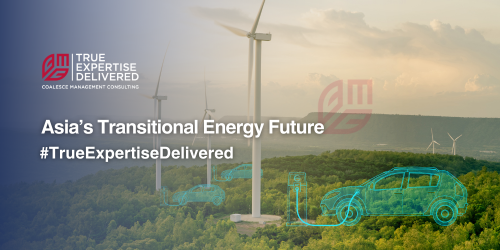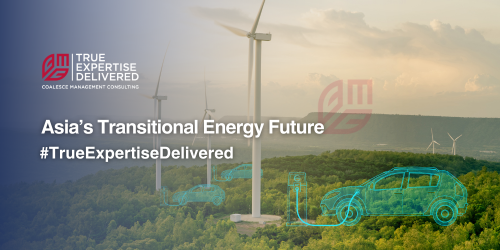The conventional energy industry, most prominently oil and gas, has long been a key driver of economic growth in the Asia Pacific (APAC) region, providing energy security, employment, and economic benefits. However, the industry is facing significant challenges, including growing concerns over climate change, shifting global energy demand, and increasing competition from renewable energy sources.
With the energy transition well underway, how is the industry responding and what opportunities are there for those still operating in conventional energy?

Is a complete transition possible?
Despite great intentions to pivot to green solutions like wind and solar, there are significant challenges that a fully renewable system will have to overcome, including grid stability and connectivity, tariffs, and supply chain issues.
The simple fact is that renewable energy in the form that it is currently available, does not produce enough power for a stable grid in many regions. Solar and wind both have the same weakness as they are not round the clock: that they operate with periods of peak generation and low generation. If there is not enough power coming into the grid in the low period, affecting the stability of the grid.
As much as we want to rely on battery storage to maintain a constant supply and overcome the low periods, that comes with its own material challenges and the processing of these materials aren’t essentially green as they consume enormous amounts of power and typically come from Fossil fuels and in a lot of cases coal. And in many places across the APAC region, you’re competing with inexorably growing demand.
The International Energy Agency (IEA) forecasts that APAC will see the fastest growth in electricity demand over the next 10-20 years, with Southeast Asia in particular expected to increase its use by as much as 60% between now and 2040.
It also estimates that half of Asia’s power generation still comes from coal, with China, India and Indonesia among those countries approving and building new coal-fired power plants. As fossil fuels are still being used, greater emphasis should be placed on transitioning and finding ways to scrub the emissions, employing CCS, and working towards cleaner combustion of the fuel. This will ensure a balanced approach during the transition period. One challenge faced by the two major economies is the amount of power needed to fuel the population and industry. Despite significant investments and the execution of renewable projects in China and India, there is still a considerable gap to be bridged.
A joint solution
None of this is to say that the energy transition is moving in the wrong direction. Renewable energy is essential for the future of the planet and the growing investment and launch of new projects is a positive sign that the region is taking significant steps towards the best solution.
China, India, Japan and South Korea combined are expected to see 577GW of new solar installed capacity and 408GW of wind by 2031. Comparatively the same countries in the same period are thought to install 150GW of fossil fuel-fired power.
So renewables remain the biggest growth area. But we can not ignore that this is a transition. It’s not a quick change and there are still many, very necessary, investments – particularly in gas.
The future in gas
Petrobras have recently made significant commitments in hydrogen, signing an agreement with Energy China to allocate “the bulk” of a $20 billion investment on green hydrogen and ammonia production in Brazil.
Meanwhile Graforce and Worley have partnered on a methane electrolysis project, intended to scale the technology across the region to convert natural gas, LNG, flare gas and other hydrocarbons into hydrogen.
It’s thought that Orsted, BP, Chevron and others are also planning significant investment into growing their hydrogen business across APAC, eyeing up the potential for growth to compete with the American market in the wake of the US’s Inflation Reduction Act (IRA).
The rapid turnaround in attitudes towards hydrogen suggests a huge potential, but there is still more from the LNG market, which has been steadily growing into a leader in the energy transition. It’s worth noting that within a gas turbine, only 5% of the fuel is hydrogen – the remaining 95% is LNG.
It may seem more traditional, but it is by no means on its way out. A report by GlobalData claims Southeast Asian countries will launch 54 oil and gas projects by 2025, representing 223,000 barrels per day of crude and 8.1 billion cubic feet per day of gas.
It is likely that we will continue to rely on LNG for the short term, as it currently plays an important role in meeting the world's energy needs, particularly in regions where natural gas pipelines are not available.
LNG has seen strong growth in recent years, and this trend is expected to continue in the short term. According to the IEA, global demand for natural gas is expected to increase by around 1.5% per year over the next five years, with LNG exports playing a critical role in meeting this demand.
Transition Your Projects
With all that in mind then, the oil and gas industry remains a critical part of the region's energy mix, and many companies are investing in new projects to meet growing demand. At the same time, there is a growing focus on the transition to a more sustainable energy future, with many governments and companies setting ambitious targets for renewable energy adoption and emissions reduction.
In this context, management consultancies like Coalesce have a critical role to play in supporting both the conventional energy industry and the wider energy transition. Through our expertise in strategy development, technical analysis, FEED engineering, Structural engineering, stakeholder engagement, and change management, we can help companies navigate the complex challenges of the energy industry and ensure long-term success.
Our dedicated technical specialists are available for deployment at any stage of a project, and remain on site until the work is completed.
Our experts can provide technical expertise including conducting feasibility studies, evaluating technology options, and providing advice on the design and implementation of projects. We regularly support energy projects across the APAC and Middle East region by engaging with stakeholders to provide solutions to the challenges in delivering your project on time.
Our consultants also support energy companies and other stakeholders in managing the change process associated with the energy transition. This could involve developing change management strategies, providing training and development programs, and facilitating organizational change.
Get in touch with our experts in APAC and Middle East to learn how we can deliver true expertise to your energy project. Contact us today.


